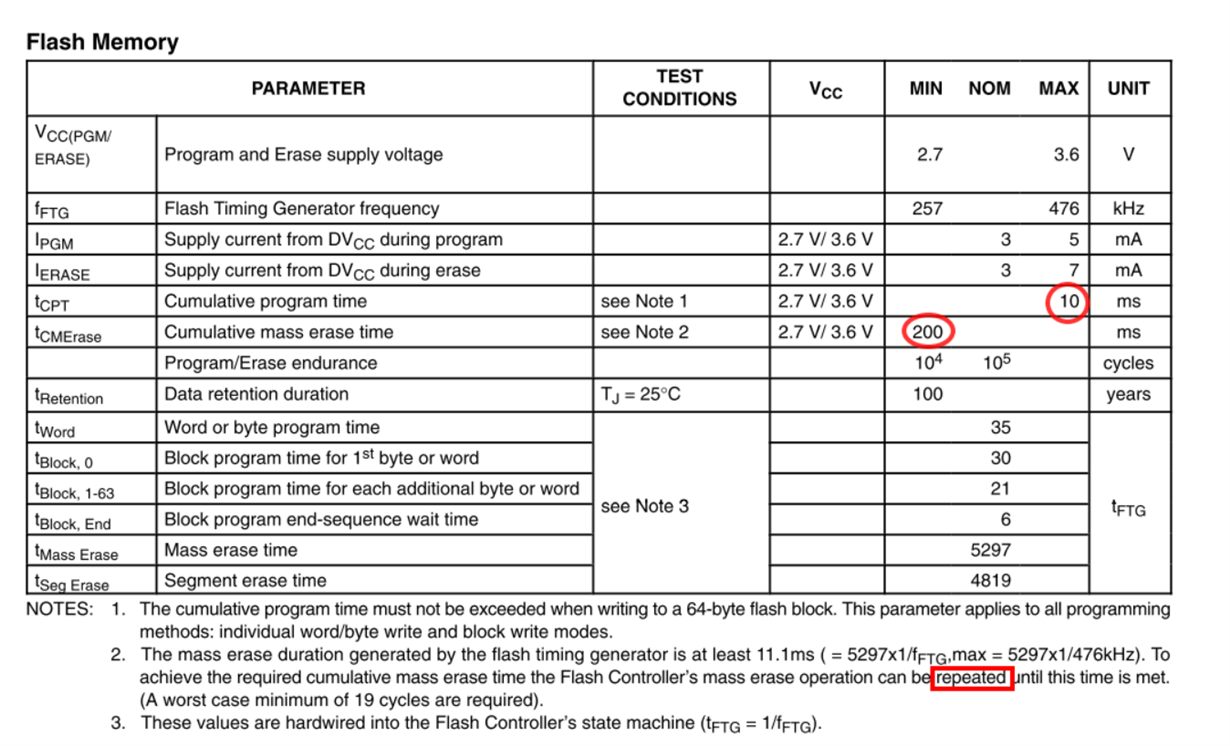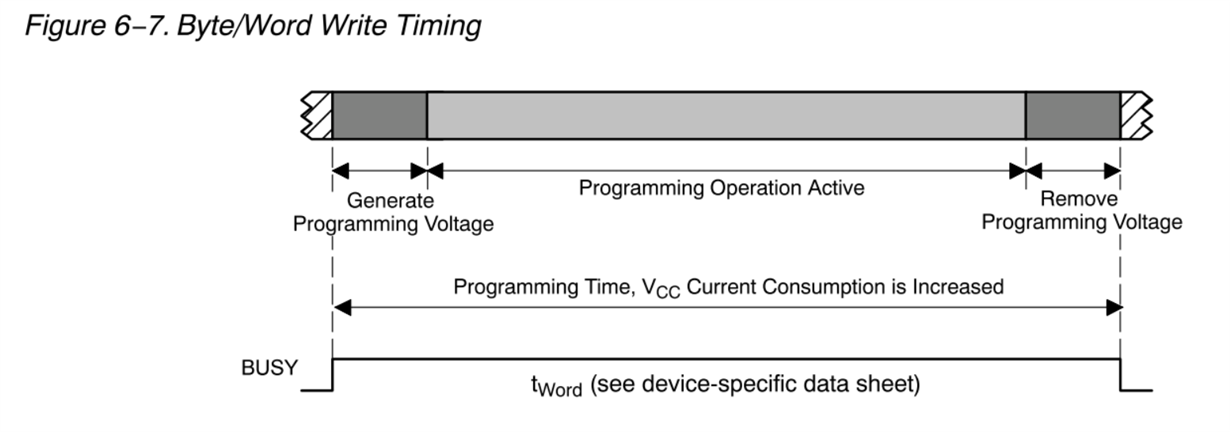Hi TI guys,
I'm now working on a OTA upgrade project use MSP430F449. and confused by the notion:cumulative program time and cumulative .mass erase time. Need your help. :)
If chose the fastest fFTG= 476KHz ,that means Tftg= 1/476KHz=0.0021ms
Program a byte need 35 fFTG, about 0.0021x35=0.0735ms
If cumulative program time is 10ms , that makes 10ms/0.0735=136 byte.
Does it mean the input parameter Lenth can't larger than 136?
Besides, how to understand cumulative .mass erase time? Iam puzzed with NOTES 2 .
B.R
Seafesse
void MSPBoot_MI_WriteBytes(uint16_t Flash_adr, uint08_t* Sram_adr,
uint08_t Lenth)
{
uint16_t i;
// fFTG = 476KHz (Max)
FCTL2 = FWKEY + FSSEL_2 + FN0 + FN1 + FN2;
FCTL3 = FWKEY;
FCTL1 = FWKEY+ WRT;
for(i=0;i<Lenth;i++)
{
while(0 ==(FCTL3 & WAIT) );
*( (uint08_t*)Flash_adr ) = *Sram_adr;
Flash_adr++;
Sram_adr++;
}
FCTL1 = FWKEY;
while( BUSY & FCTL3);
FCTL3 = FWKEY + LOCK;
}



